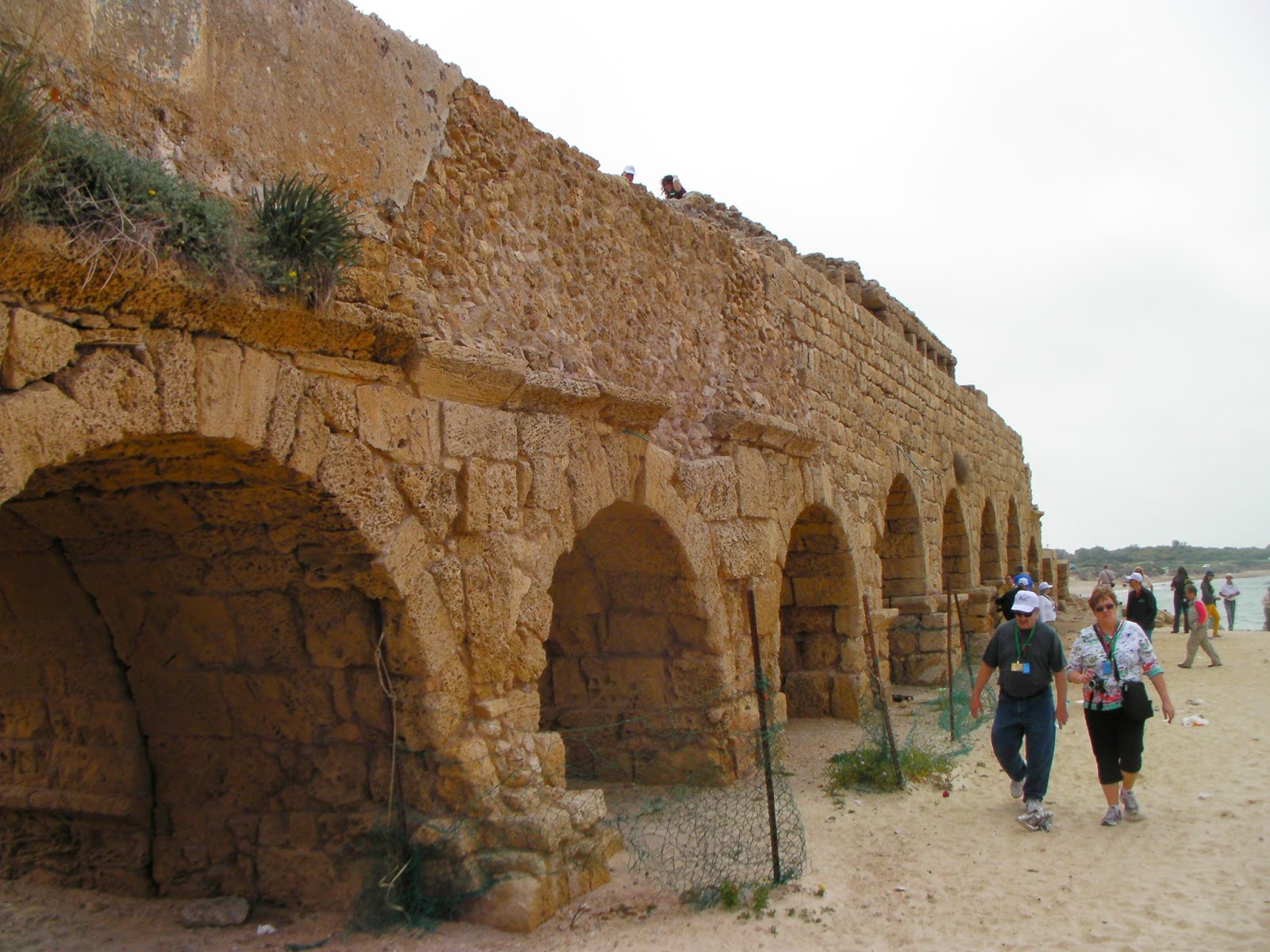As we venture out to the site of Herod the Great's summer palace, you quickly see there isn't a lot left, but once you understand what was once there, it still impresses.
There are fishermen using Herod's palace as a place from which they cast their hooks into the Mediterranean Sea. The waves wash over the foundations of first century concrete laid by the Romans. The Romans knew then how to pour concrete under seawater to create harbors, breakwaters and Herod's palace.
One thing Herod always seemed to incorporate into his projects were pools of water. In the middle of the picture you can see the remnants of the large pool, the rectangle with water in it. This served to keep things cool in the warm summers as well as their obvious function.
Although the day is young and it isn't obvious in the pictures, the warmth of the sun is coming through and this Alaskan is feeling it. (If you see people in jackets and hats, it isn't because they are chilled, it is their attempt to stay out of the sun's rays and avoid skin cancer.) I learn something quite by accident. One of the very useful qualities of building with stone is that it acts like a cold/heat bank. As the sun is warming things up, you can lean on a stone pillar and feel the chill still banked in the stone. As the day wears on in the 1st century, I can imagine a lot of these cold stone pillars would have an "air conditioning" effect on the house as it would have a roof and walls. After a warm day, the stone would eventually be warmed up and give heat during the cool night. Smart guys.
Ceasarea not having a significant supply of fresh water to fill Herod's pools and the thirst of this bustling port, he builds an aqueduct from fresh water springs some 14 miles away. These ruins are about 6 km from Ceasarea itself and seems to be a very popular beach for families. Imagine.
These are built so well and work so well that civilizations centuries later build on top of them to water their projects. You can see the change in the size of the stones on the bottom and the top. That always signifies different eras of civilization. Another little note, notice the round arch tops. This signifies Roman, 1st century. Later we will see arches with peaked tops. That will be later civilizations, byzantine, crusader, Muslim and the like. So you know you are looking at something much older when you see the round arch tops.
Two things among many that are important here. First, a stone plate was found that mentions Pilate. Again, extrabiblical sources are very important to verifying the accuracy of the scriptures. When the Bible mentions a historical figure and that historical figure is also mentioned from a source not having anything to do with the Bible, it says a lot about how accurate the Bible is.
The stone plate here is not the actual one as it is far to important to leave out where a bunch of tourists can tip it over. The real stone is in the Israel National Museum and this one is a copy.
The second thing that is so important here is that this is the actual site setting of Acts 25 and 26. This is where Paul was kept while making his defense against the Jews of Jerusalem who were seeking to have him killed. Paul in his last ditch attempt to avoid this shameful charade appeals to Caesar - Acts 25:11. It was amazing once again to walk in the very area of someone I have read about in scripture all my life. It made the scriptures come so alive. To see the same views Paul would have known and to walk in the palace Paul would have been familiar with was very special indeed.
Thursday, April 24, 2014
Subscribe to:
Post Comments (Atom)










No comments:
Post a Comment
I would be interested to have your comments!